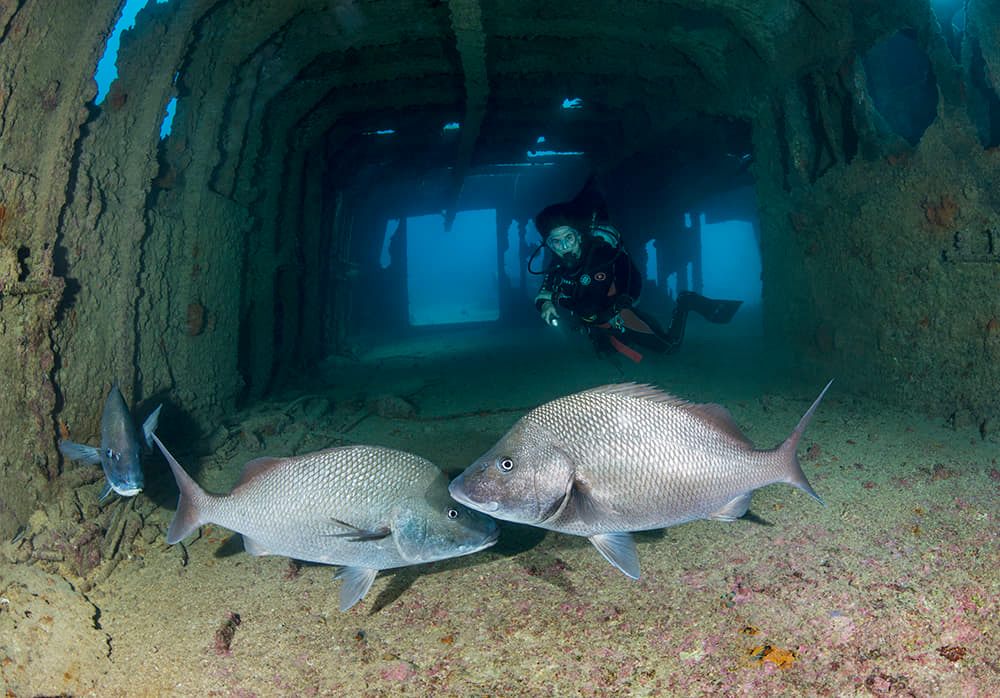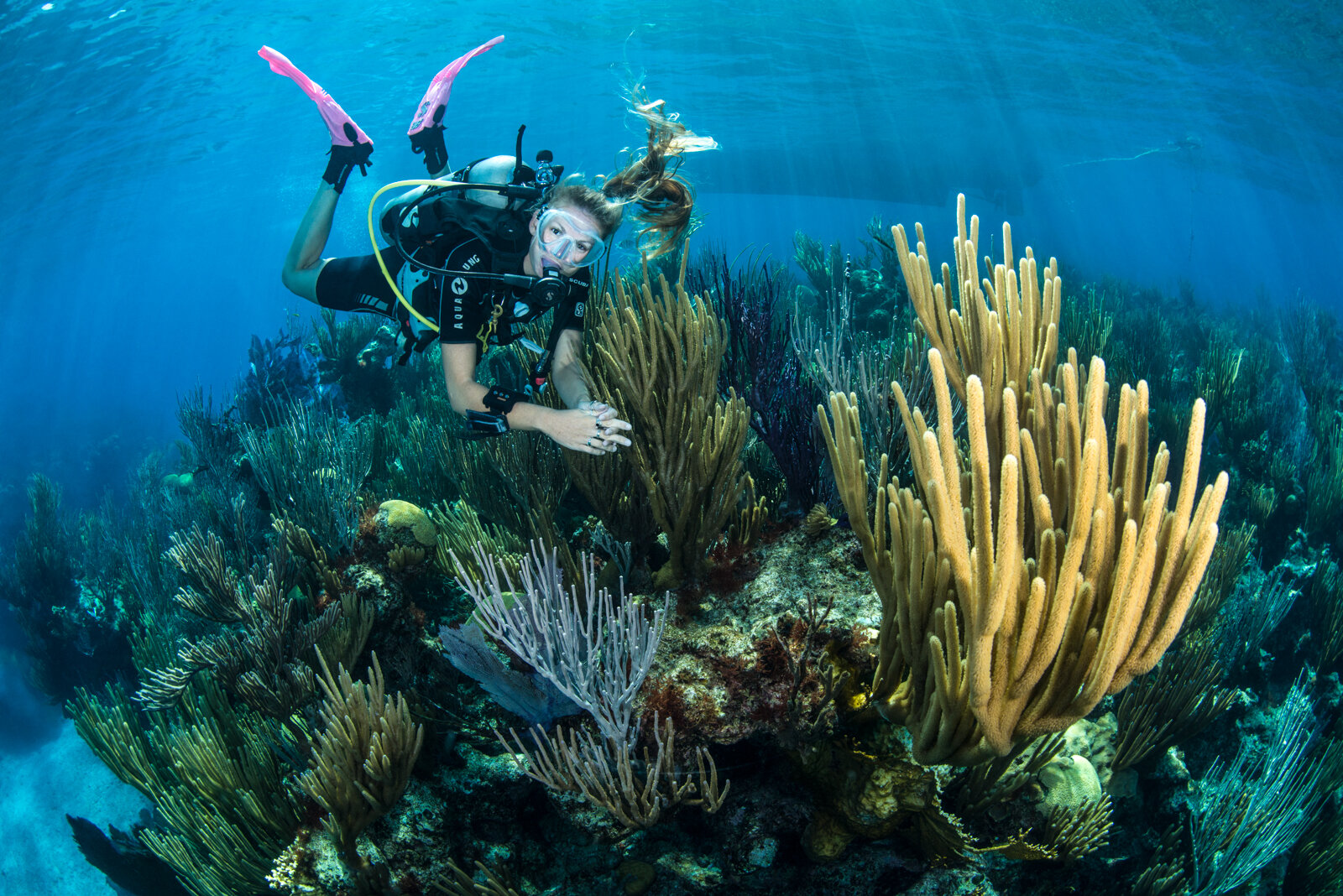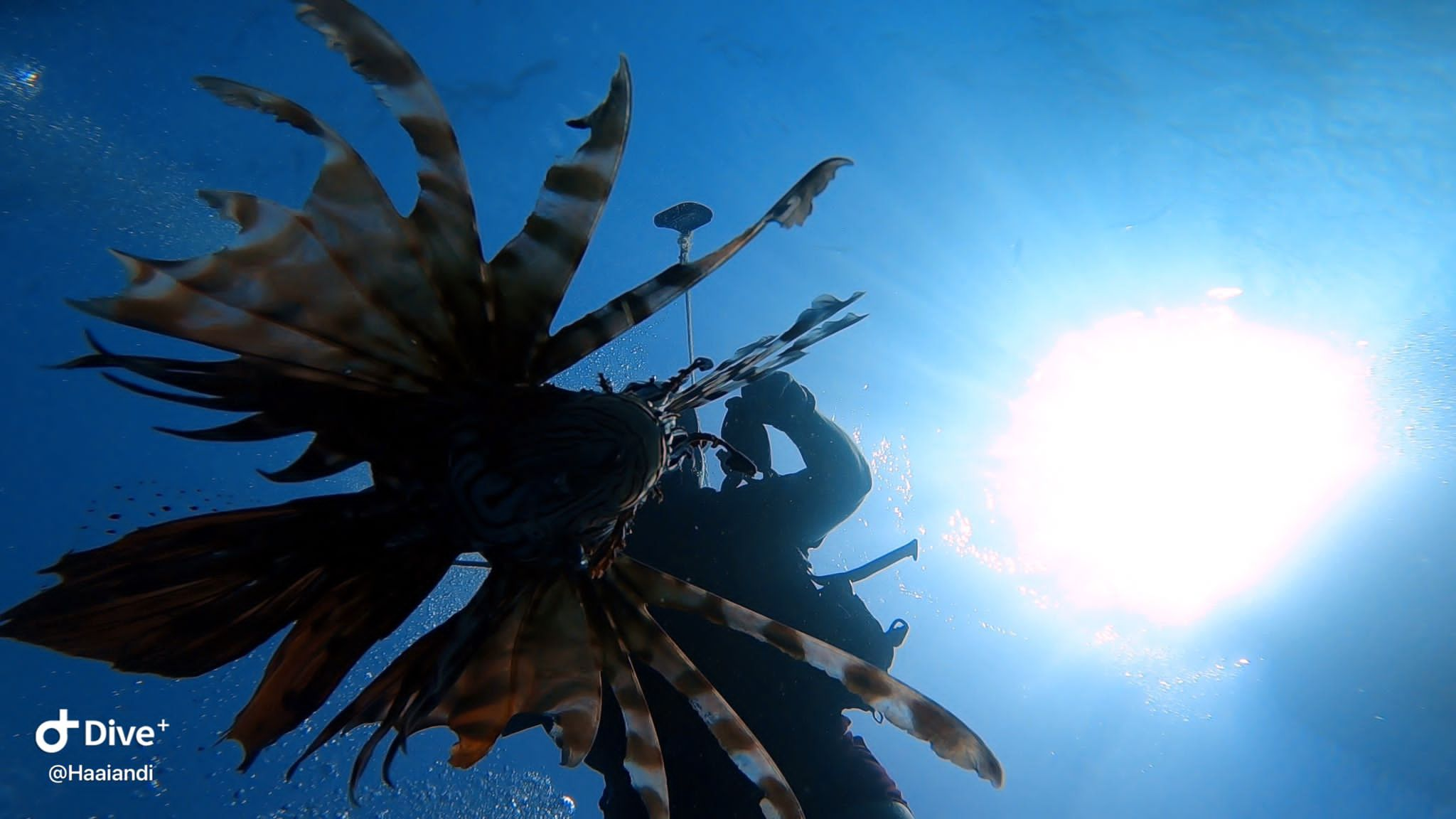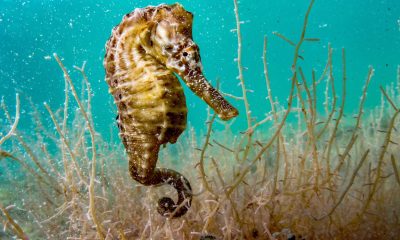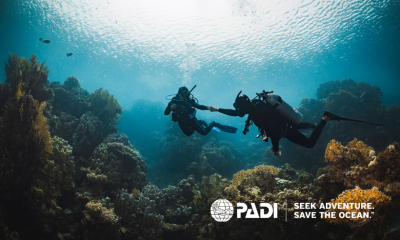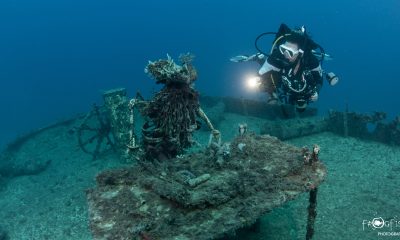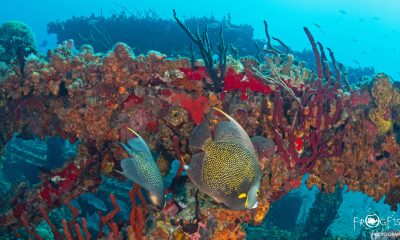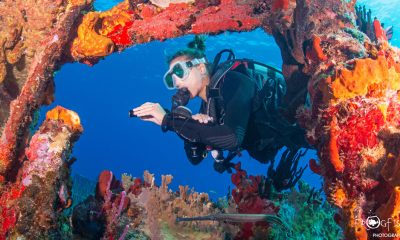News
Halloween Special Part 1: Bermuda – the ultimate destination for spooky dives
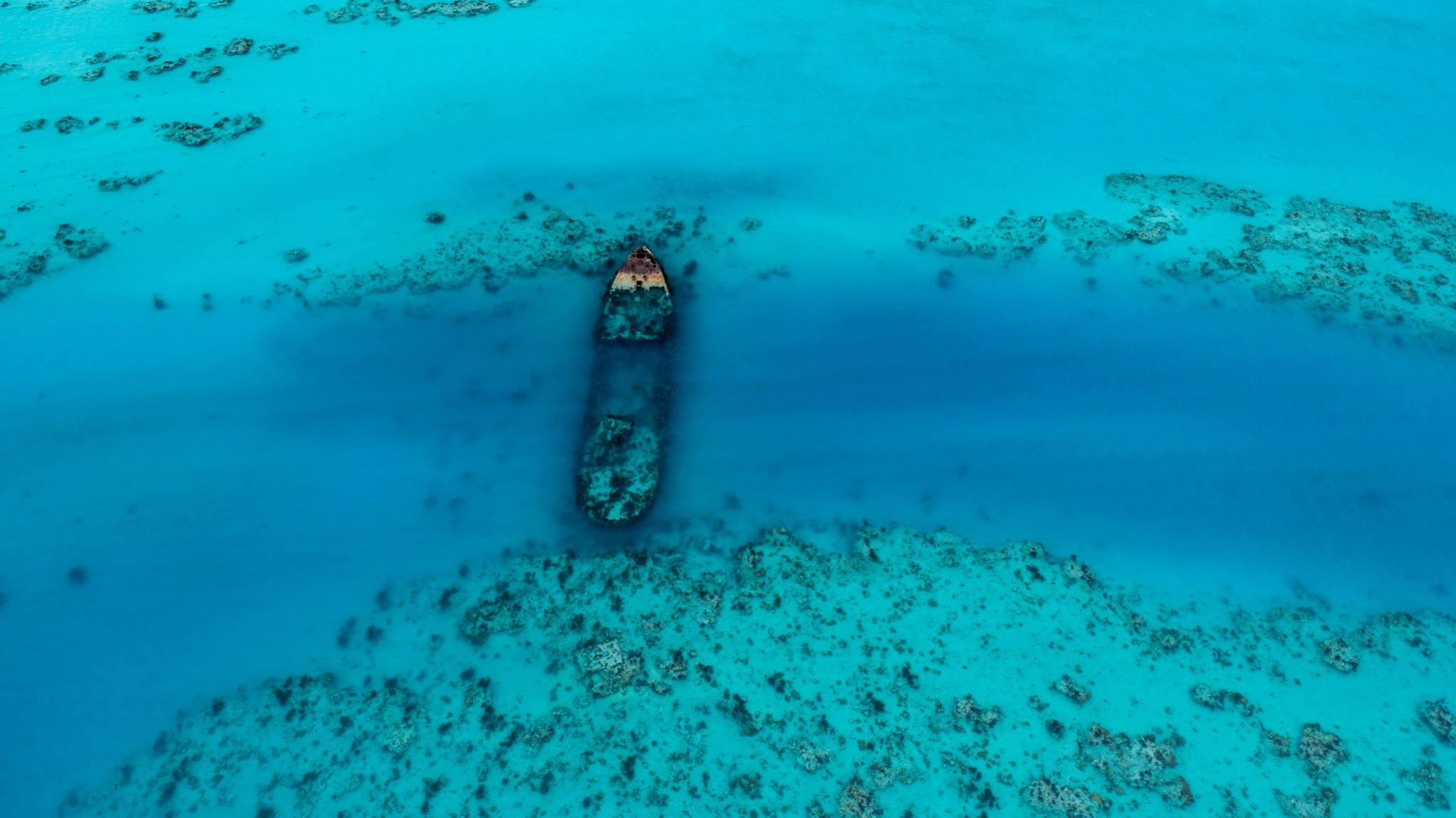
Just in time for Halloween, we take a deep dive with PADI into spooky Bermuda… check back for part 2 on Monday.
Are you a thrill-seeker who loves the call of adventure and doesn’t mind a good scare? If you’re looking for something mesmerising, intriguing, and downright creepy then look no further than Bermuda, the ultimate destination for a spooky dive.
Why Bermuda? Mysterious disappearances, real-life underwater monsters, hundreds of shipwrecks to explore – the list goes on. Found in the North Atlantic Ocean and surrounded by fringing coral reefs, Bermuda already offers fantastic diving for anyone delighted by diverse and stunning aquatic species. But if it’s the eerie and uncanny you’re after, Bermuda hits the mark too!
You may already be familiar with strange stories about the Bermuda Triangle – a peculiar region where planes and ships seem to disappear into thin air – but did you know that Bermuda is also known as the Wreck Capital of the Atlantic?
There are over 300 sunken ships scattered around Bermuda. Some even date back to the 1600’s thanks to Bermuda’s extra shallow reefs. With so many ghostly shipwrecks to explore, it’s easy to see why the Bermuda Triangle has become the stuff of myth (and no doubt nightmare for some).
Dive deep with PADI for the frightful and freaky scoop about Bermuda – read on with caution and don’t say we didn’t warn you!
PADI’s 8 Spooky Fun Facts About Bermuda
- Strange Weather and Extra Deep Waters
Bermuda is known for all kinds of bizarre natural phenomena. From ultra-extreme weather and uneven seafloors to strong electromagnetic field pulls (ever heard of electronic fog?!) and unpredictable rogue waves, it’s no wonder there have been so many shipwrecks around the island over the years. At a depth of 27,493 feet, the Bermuda Triangle is home to the deepest point of the Atlantic Ocean at the Puerto Rico Trench in the Milwaukee Depth.
- Mysterious Disappearances
The Bermuda Triangle has long been renowned as a creepy spot that pilots and ship captains alike would prefer to avoid. There are countless tales of ships, planes, and submarines that have gone missing without a trace, and while there are over 300 wrecks found on the ocean floor, many disappearances remain a mystery. It’s estimated that at least 50 airplanes and 20 ships are unaccounted for to this day.
- Magnetic Anomalies
The Bimini vortex often comes up as an oddity connected to the Bermuda Triangle. It’s described as a unique spot where compasses spin, and electronics fail to work properly. Even more strange are reports of dolphins that appear very suddenly and come right up to divers. Some attribute the anomalies to “electronic fog” which is described as an electromagnetic field that appears as a cloud over the ocean, engulfing a ship and causing its electronics to malfunction. While pilots and coast guards have indeed reported uncanny fog in the area, electronic fog remains a supernatural theory that makes the Bermuda Triangle even more mysterious.
- Fact or Fiction?
The city of Atlantis is a fictional story that originated with Plato about a lost civilization that was wise and powerful. Some of the stranger myths about the Bermuda Triangle suggest that the inexplicable magnetic anomalies found in the area are connected to ancient technologies left behind from Atlantis. Paranormal writer Charles Berlitz brought this idea to life, also suggesting that Atlantis was the cause of the many mysterious disappearances in the Bermuda Triangle.
- Supernatural Lighting
Dive on the east end of Bermuda and you’ll discover the Cathedral site, where a beautiful and ethereal series of coral formations are inhabited by a host of spectacular fish. What makes the Cathedral so special is its vaulted reef structure that creates a natural skylight when you’re in the depths of your dive – talk about mood lighting! A single shaft of light through a hole at the top of the reef illuminates the otherwise dark and spooky waters at depths of 55 feet.
- Surprise Visitors
To the west you’ll find Eel Garden, named after garden eels, where the critters will jump out and try to give you a fright as you delve through shallow and deep waters at depths from 30 to 70 feet. Not to worry – although they may startle you, these eels simply want to wave hello when they pop their heads out from the sand.
- Shoot Real-Life Monsters
The real monsters in Bermuda aren’t the friendly garden eels. Instead, you need to watch out for lionfish, an invasive species in the Atlantic that reproduces quickly (laying up to 2 million eggs a year!) and feeds on small crustaceans and fish. Because they have such an impact on the local ecosystem, lionfish culling is a common practice in Bermuda. You can help in the hunt to take down these real-life monsters with the PADI Bermuda Invasive Lionfish Culler Distinctive Specialty.
- More Than Shipwrecks Underwater
While Bermuda is famous for the extensive number of shipwrecks scattered around the island, there’s more to be found in the deep blue. Divers can also visit the skeleton of a B-50 Bomber that crashed into the watery depths of the Atlantic in 1963. The airplane went down after its jet engine exploded and to this day divers can find the remains of bent propellers, wings, and fuselage at a depth of 25 feet.
Check back on Monday for… PADI’s Top 7 Wrecks to Dive in Bermuda!
Images: DIVE BERMUDA
News
Seahorse National Park announced on Eleuthera in The Bahamas
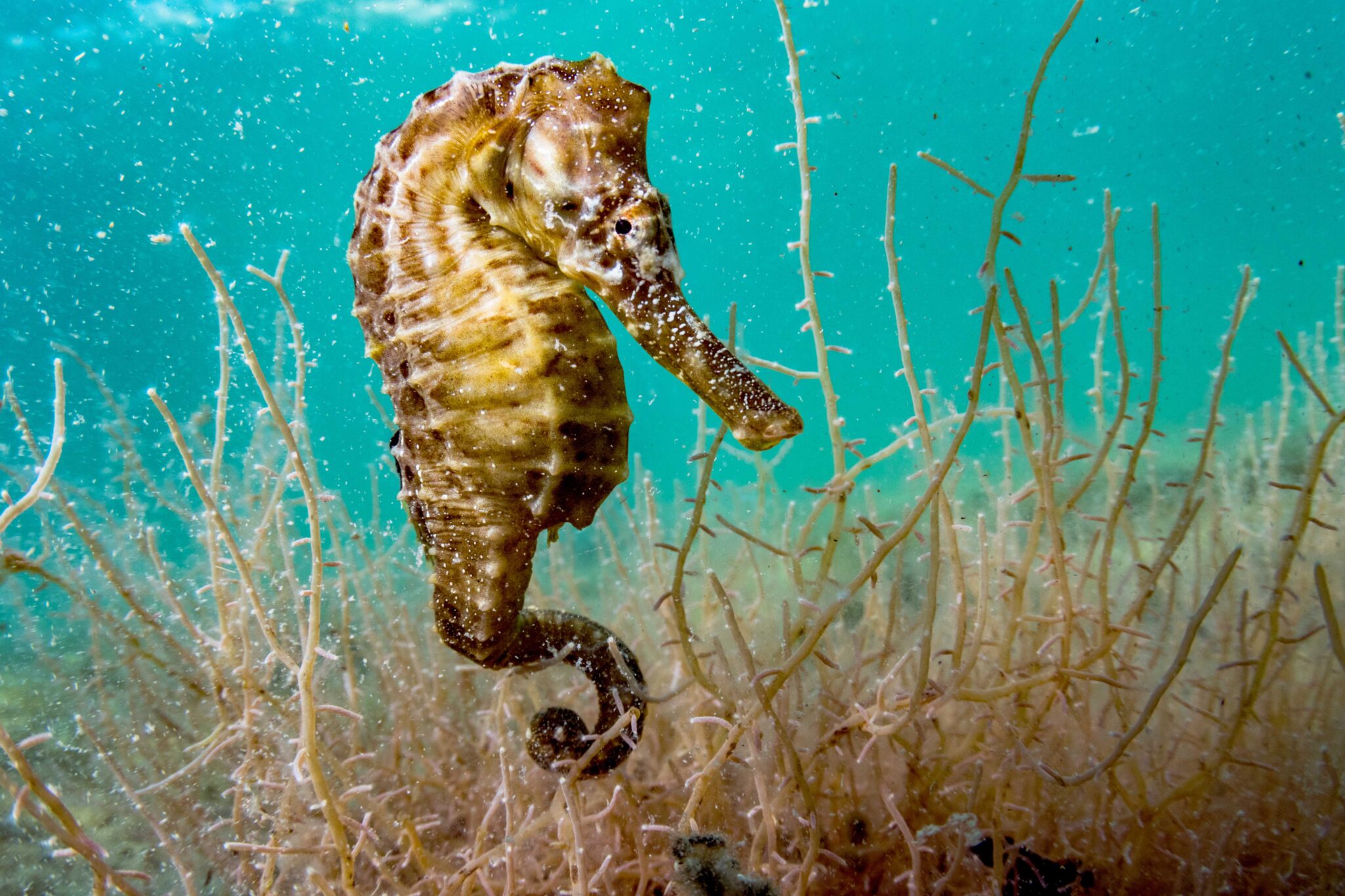
This week has seen the announcement of the designation of Seahorse National Park at Hatchet Bay Cave and Sweetings Pond on Eleuthera. This monumental announcement comes after years of efforts from the BNT and its partners in advocating for the protection of Sweetings Pond and its surrounding areas as an official national park under the BNT’s management.
Sweetings Pond is a large, land-locked saltwater pond in Hatchet Bay, Eleuthera. It has many unique natural features, but the most notable of them all is its incredible seahorse population, which is believed to be the densest population of seahorses in the world. The new 548-acre national park protects the entire one-mile-long pond and the surrounding terrestrial area. The land surrounding Sweetings Pond is a blend of intact coppice, mangroves, and farmlands. In addition, the new national park includes the extensive Hatchet Bay Caves system. This historic cave system is a popular attraction and contains a number of impressive geological features. It is one of the longest dry cave systems in The Bahamas.
Since 2014, the BNT has been leading efforts to have the area declared as a national park. This included years of public outreach and stakeholder consultations in communities across Eleuthera; education presentations in local schools; science and research efforts; and engaging consecutive government administrations. In 2018, the BNT submitted the “20 by 20 Marine Protection Plan” to the government, which included the recommendation to declare Sweetings Pond and other areas in The Bahamas as protected areas.
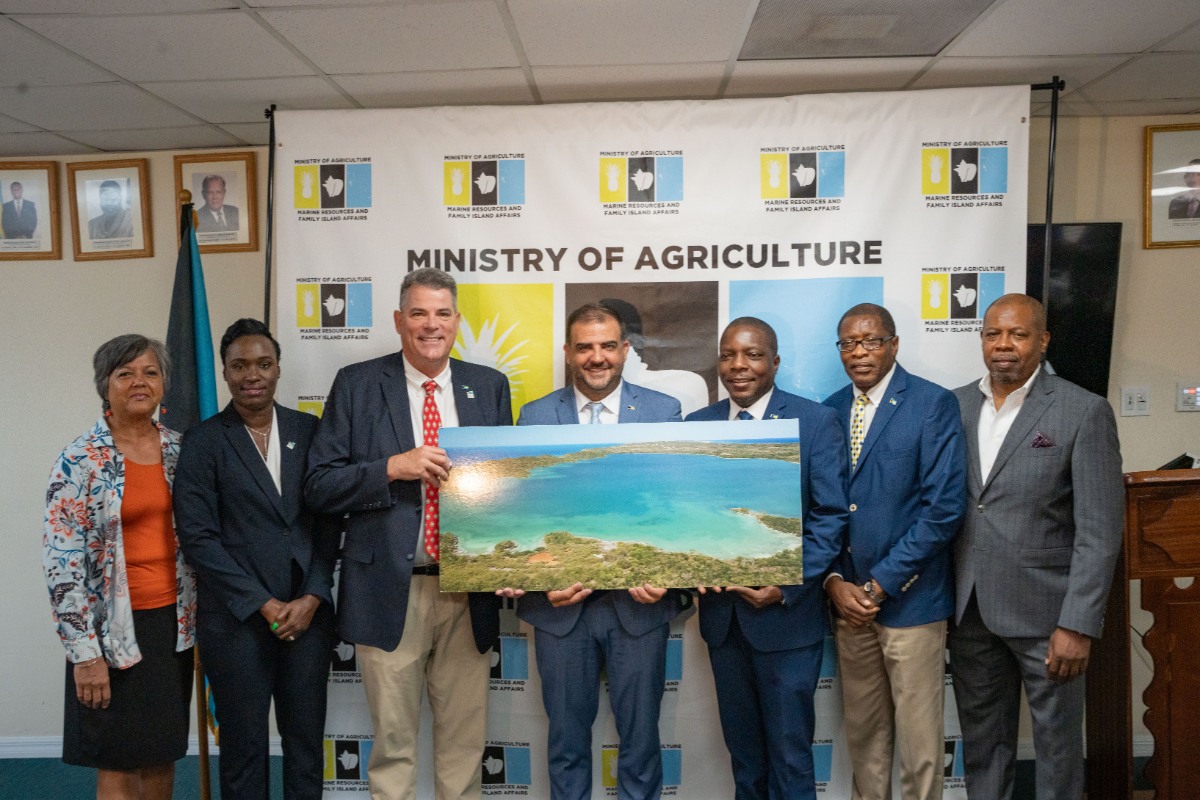
During the lease signing ceremony for Seahorse National Park, Minister Clay Sweeting, said, “This lease agreement for Sweetings Pond has been a long time coming. It represents a milestone in our journey towards sustainable development. It symbolises our collective responsibility to safeguard our natural heritage and create a harmonious relationship between economic progress and environmental preservation.
“I would like to express my gratitude to all stakeholders in this process of drafting and finalising this lease agreement. Their dedication, expertise, and commitment has been crucial in ensuring that this agreement falls in line with our vision of creating a thriving ecosystem while promoting responsible usage. Let us continue to preserve the jewel that is Sweetings Pond for many generations to come.”
The BNT invites the public to stay tuned for more news about its plan for the country’s newest national park: Seahorse National Park at Hatchet Bay Cave and Sweetings Pond!
To learn more about the role the BNT plays in managing terrestrial and marine national parks, conserving wildlife, and informing environmental policy, please visit its website: www.bnt.bs
Follow/subscribe to its various social media channels: Facebook, Instagram, Twitter, and YouTube.
Banner Image: A lined seahorse (Hippocampus erectus), female, clining to algae in an alkaline pond in The Bahamas by Shane Gross
News
PADI Club invites Ocean Lovers on exclusive dive trip to Bonaire this September
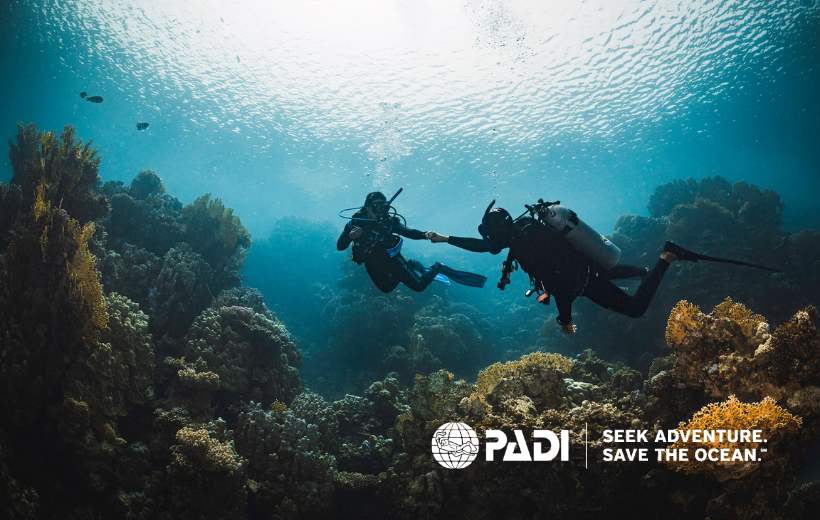
Following the popularity of the PADI Club trip to Belize at the end of July, a second “dive trip of a lifetime” has just been announced by PADI Club to Bonaire this September 23-30, 2023.
Offered exclusively for PADI Club members as part of their yearly benefits, attendees will get to seek adventure while staying at the all-inclusive Buddy Dive Resort, one of PADI’s premier members on the island. Other PADI Members in Bonaire – including Toucan Divers, Divi Flamingo, Wanna Dive, Dive Friends and Scuba Do – will also be hosting various dive experiences throughout the week.
“Bonaire is a unique and beautiful gem in the Dutch Caribbean and we want to show our Club Members this little island looms large as a dive destination,” says Zach Pavkov, PADI Club Operations Manager. “This trip offers participants a chance to not only explore a world-class diving destination but do so through some of the very best PADI Operators.”
PADI Club members will receive a generous discount for this seven-day diving adventure, with packages starting at $1,739 per diver for double occupancy.
Included in the package are:
- social events that include hosted dinners, cocktail parties and live music
- transportation in Buddy Dive Resort’s famous pick-up truck
- daily shore diving and boat diving
- accommodation, with the option to share a room with another solo diver or rent out one, two and three-bedroom apartments to host larger groups of divers
- surface interval activities that include PADI Seminars and island excursions like hiking and bird-watching.
“Because the water surrounding Bonaire has been an established marine park for 44 years, Bonaire is now a top-ranked destination with abundant marine life that includes scorpionfish, flounder and frogfish, moray eels, hawksbill turtles and eagle rays, ” continues Pavkov.
With limited spots available, the list of participants will be decided on a first-come, first-served basis. Those who are not yet PADI Club Members but are interested in joining the trip can sign-up, which will also give them access to:
- 20% of PADI eLearning® programs and PADI Gear™
- a free ReActivate® online refresher
- a free DAN® Prepared Diver course
- a subscription to Scuba Diving® magazine
- access to the PADI Club Celebrity Speaker Series webinars
- brand partner benefits from GoPro, Uber, Salt Life and more
To further support ocean lovers to create positive ocean change, five percent of the PADI Club membership fee will go towards supporting conservation efforts around the globe.
“PADI Club benefits are designed not just to empower divers to explore the ocean, but also enable them to play a pivotal role in saving the ocean too,” says Pavkov. “This year’s additional expedition to Bonaire gives our community the chance to come together and explore our shared blue planet in a truly meaningful and connected way.”
Click here to sign up for PADI Club and reserve your spot here to join the Bonaire dive trip.



